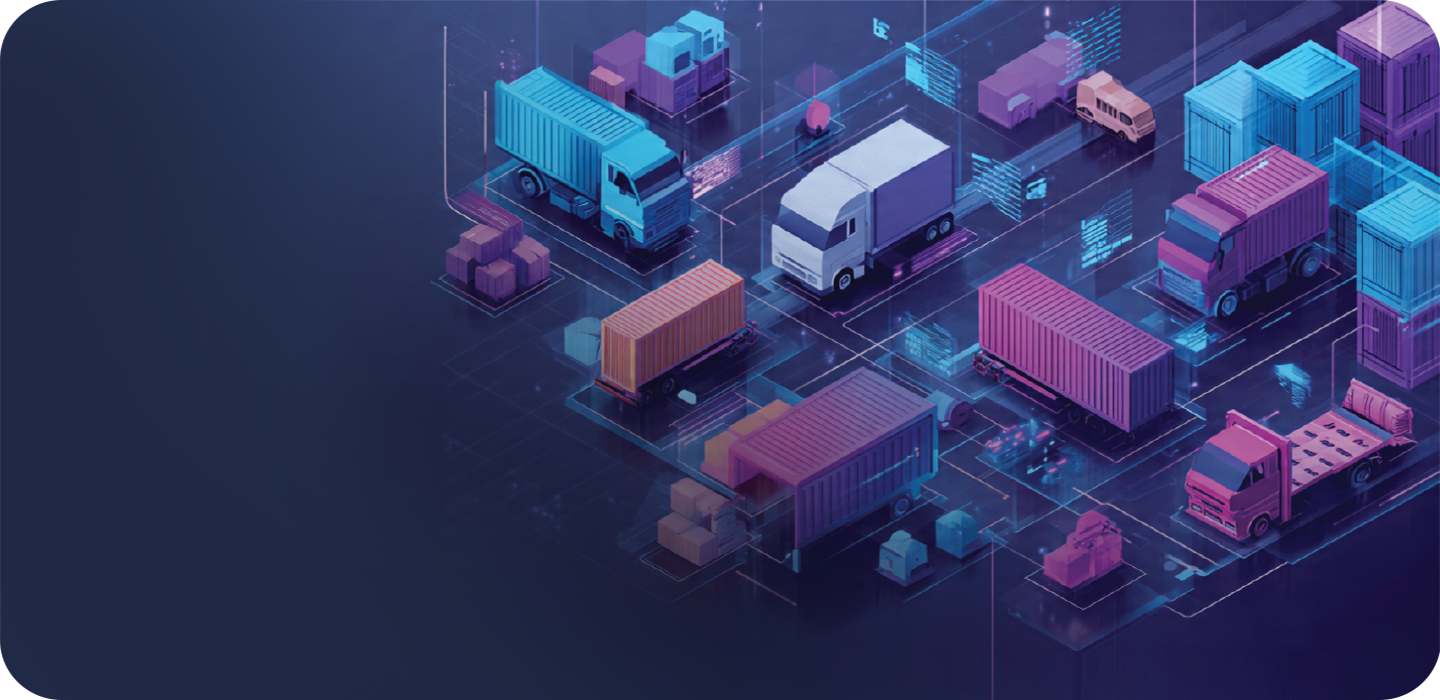

Supply chains have always lived with uncertainty, but the past few years have stripped away any illusion of predictability. Disruptions in global trade no longer feel like once-in-a-generation shocks, they are the new baseline. Black swan events – a canal running dry, a tariff announced overnight, a pandemic that halts cross-border movement – have become part of the operating environment.
Yet the mandate for supply chain leaders has not changed – get the right product, to the right place, at the right time. What needs to change is how they deliver on this mandate. Linear models built for predictability struggle in today’s volatile world. The path forward lies in supply chains that are composable, orchestrated through platforms, and increasingly augmented by AI.
The End of Linearity
Traditional supply chains were engineered with linearity in mind. Materials flowed from suppliers to factories, from factories to warehouses, from warehouses to retailers, all dependent on predictability – stable routes, reliable suppliers, and demand curves that follow historical patterns. That model worked in a world where uncertainty was occasional. Today, the reality is far less forgiving and linear models falter under this strain.
Every leader today faces the same dual constraint: the sheer complexity of global networks and the flexibility required to respond when disruption strikes. Complexity shows up in the number of partners, nodes, and systems involved, each with their own data standards and policies. The challenge for leaders is not to eliminate this complexity but to build flexibility into how they respond to it. They must be able to respond without re-architecting the whole stack whenever routes shift or demand swings. The test is simple: when a canal closes or a tariff reshapes landed costs, can you redirect supply, rebalance inventory, and serve customers without missing a beat? Linear chains rarely can.

Composability as a Design Principle
This is where composability comes in. Instead of monolithic systems that try to do everything, a composable supply chain is assembled from best-of-breed modular capabilities – forecasting, demand sensing, traceability, order orchestration – that can be combined and reconfigured as business needs evolve.
Think of it as building with Lego blocks. A consumer goods company might use demand sensing and traceability to manage fragmented distributor markets. A sportswear brand might emphasize order orchestration and inventory allocation. A high-tech manufacturer might need all of the above. The principle is the same: assemble the blocks that fit today’s needs and retain the flexibility to rearrange them tomorrow.
But a Lego model only works if the blocks fit. In supply chains, that fitting is called orchestration: the enterprise layer that ensures different systems interoperate and share context. Without it, blocks remain isolated. With orchestration, data and processes flow across modules, partners, and systems in a way that preserves context. This is where integration must rise above the level of plumbing.
Traditional integration platforms (iPaaS) excel at moving data between systems. But they treat all flows as equal, when in reality each has different business requirements. A traceability flow must preserve immutable lineage at lot level to comply with regulations such as the FDA’s FSMA 204 rules. A demand sensing flow needs rapid feedback loops from point-of-sale data so that production schedules can pivot before stockouts or gluts emerge. An order orchestration flow must harmonize formats across marketplaces, warehouses, and logistics providers while ensuring fulfillment meets service-level expectations. Treating these flows as identical ignores their nuances.
That is why supply chain leaders are moving toward what can be called an opinionated iPaaS – an integration layer that carries business logic. It comes with prebuilt policies, templates, and controls that are flow-aware, context-aware, and use-case-specific. It knows that traceability demands fidelity, that sensing requires speed, and that orchestration involves complex routing rules. This kind of integration does more than connect pipes; it embeds supply chain intelligence directly into the flow of data.
Equally important is that these blocks be configurable rather than bespoke. Bespoke systems may feel tailored but usually come with long timelines, high cost, and brittle results. Configurable blocks, by contrast, can be deployed quickly, adapted easily, and integrated without discarding existing investments. They offer speed to value without sacrificing resilience.

Platforms: The Spine That Holds It Together
If composability is the design, the platform provides the spine that holds it together. It’s what ensures your blocks snap together, whether they are built in-house, bought third-party, or custom-tweaked. It standardizes the elements that must be consistent across modules: data contracts, identity and access, event management, observability, and governance. It ensures that when a new forecasting engine is added, or a logistics partner integrated, the rest of the system remains stable. Without that spine, the supply chain risks devolving into a brittle patchwork of disconnected tools.
Control towers illustrate this well. The first generation of control towers promised visibility: dashboards that showed shipments in motion and alerts when things went wrong. But visibility alone doesn’t move goods. A modern control tower, built on a platform spine, is not a dashboard but a decision system. It ingests near-real-time data across the ecosystem, applies policies and models, and drives coordinated action.
Operationally, many enterprises are also choosing to consume platforms as a managed service, where the provider runs the orchestration spine under shared SLAs. The advantage is speed and stability: implementations measured in months, not years, and ongoing upgrades without burdening internal teams. The strategic payoff is the same: a stable backbone that allows composable blocks to be added, swapped, or retired as business needs shift.
From Dashboards to Decisioning
The shift from dashboards to decisioning marks the most significant evolution in supply chain management. Dashboards tell you what has happened; decisioning systems suggest and execute what should happen next. Here is how it plays out in on the ground:
- Traceability and Recall: Under FSMA 204, food manufacturers must capture KDEs at CTEs for items on the Traceability List and provide them rapidly to regulators. Legacy recall processes often took weeks, as teams pieced together records from suppliers, ERPs, and logistics partners. Composable, traceability-aware flows change this dynamic. By linking raw materials to batches, batches to plants, and plants to shipments, companies can quickly identify affected lots in the event of a contamination. Instead of recalling entire product lines, they can surgically pinpoint risk. In one implementation, recall execution time fell by roughly 90% once the lineage was mapped across raw materials, plants, and shipments. That kind of speed is not just about compliance; it limits exposure, reduces costs, and preserves trust.
- Order Orchestration and the Endless Aisle: When the pandemic shut stores, a leading sportswear brand with a global footprint faced a dual challenge: inventories piling up in ports and retail stores closed, while online demand surged and e-retail partners went out of stock. The answer was to build a partner exchange platform that made the brand’s inventory visible to partners in real time. Orders placed on a partner’s site could be fulfilled directly from the brand’s own stock, even if the retailer held no inventory. The platform integrated order management, inventory, and logistics systems, routing orders in under two seconds. The effect was significant: 27,000 products became available to partners without physical stock, 75,000 orders worth $2.5 million were processed in a single day during a festive sale, and partners reduced carrying costs and avoided redundant transport. What could have been a crisis turned into a connected ecosystem that served customers better.
- Intelligent Inventory Allocation: Out-of-stocks are expensive. Traditional allocation models either oversupply all regions or respond too slowly when demand shifts. Agentic systems take a different approach: they continuously monitor demand signals, simulate rebalancing options, and execute transfers when confidence is high. When trade-offs are complex – protecting a promotion in one region versus reducing excess in another – the system escalates to human decision-makers with context. The result is fewer lost sales, fewer emergency expedites, and more resilient service levels.

What’s Next for Leaders
Here’s what leaders need to do:
- Own the orchestration mandate at the business level. Supply chain leaders must anchor the vision that IT, operations, and logistics support.
- Build with blocks you can configure. No vendor covers everything in supply chain. Expect to combine modules from multiple providers and to swap them as markets evolve. Choose blocks that play well with others. Invest in modular capabilities – demand sensing, APS, traceability – but avoid bespoke rebuilds unless absolutely necessary.
- Ensure your platform has the business logic baked in – flow-aware, use-case aware, context savvy integration that recognizes and respects different requirements.
- Make your control tower a decision tower. Move from dashboards to actionable signals. Use AI and analytics for what-if scenarios, early warnings, and automated or semi-automated responses.
- Fix your data foundation. Standardize data contracts, clean ingestion pipelines, and apply governance. Many transformations fail not because the logic is wrong, but because the data cannot be trusted.
Loved what you read?
Get practical thought leadership articles on AI and Automation delivered to your inbox


Loved what you read?
Get practical thought leadership articles on AI and Automation delivered to your inbox
Final Thought
Volatility is not going away. What separates leaders is the ability to adapt – to recompose capabilities, orchestrate partners, and act with intelligence. Composable architectures, opinionated integration, and platform spines, augmented by AI, are how supply chains will meet that test. They allow organizations not just to react to the next disruption but to shape more resilient, responsive networks for whatever comes next. That is how supply chains will “craft the next with AI.”
Disclaimer Any opinions, findings, and conclusions or recommendations expressed in this material are those of the author(s) and do not necessarily reflect the views of the respective institutions or funding agencies.





